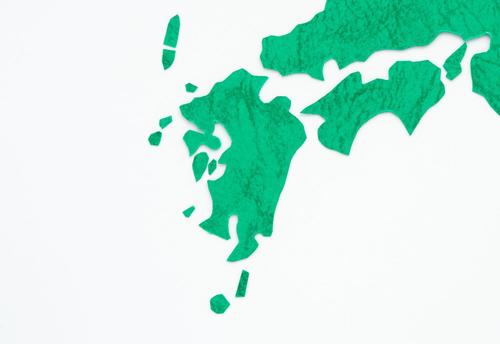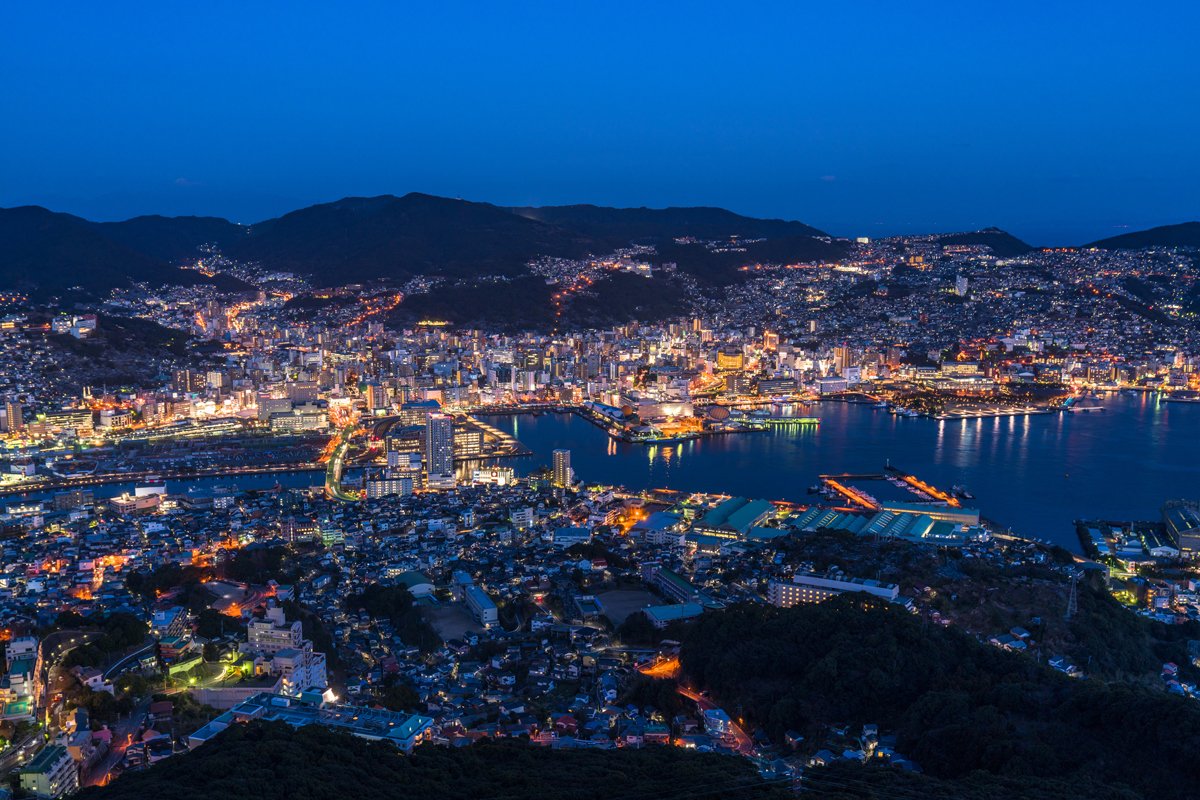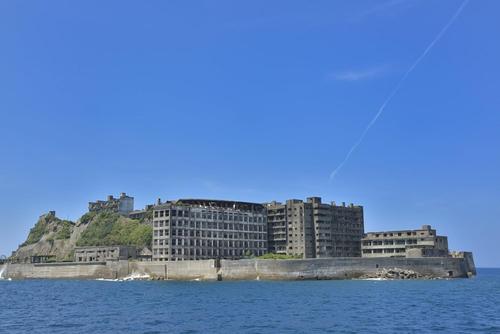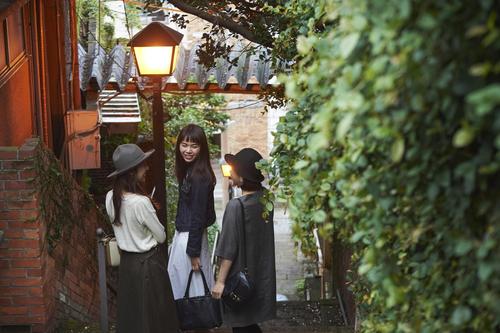The Kyushu area has seen an increase in foreign tourists in recent years, and is gaining attention as a tourist spot on a par with Tokyo, Kyoto, and Hokkaido.
Here, we'll explore the charms of Kyushu while also looking at Japanese history, and introduce the highlights and sightseeing spots in each of Kyushu's seven prefectures. Please use this as a reference when planning your trip to Kyushu or when promoting the charms of Kyushu to people overseas.
Kyushu is actually made up of seven prefectures! Why?

Although it is called "Kyushu," there are only seven prefectures in the Kyushu area. Why is it called Kyushu and not the "Seven Provinces"? Let's take a look at Kyushu's historical role in Japan and an overview of the seven Kyushu prefectures.
The surprisingly deep history of Kyushu
The Kyushu region is surrounded by the sea and has developed since ancient times through deep ties with Asian countries such as China and the Korean Peninsula. It is said that the Yamatai Kingdom, which appears in the Wei Zhi Wakokuden, was located in Kyushu, and Kyushu is also home to places with deep ties to Japanese mythology, such as Hyuga and Takachiho.
In modern times, it also served as a gateway for the introduction of European culture, such as Dejima in Nagasaki and Christianity.
Were there nine Ritsuryo provinces until the early Meiji period?
Kyushu currently consists of seven prefectures: Fukuoka, Saga, Kumamoto, Nagasaki, Oita, Miyazaki, and Kagoshima, but this is because they were reorganized into seven prefectures when the feudal domains were abolished and prefectures were established. In fact, until the early Meiji period, the area was divided into nine provinces, including Chikuzen, Chikugo, Satsuma, and Osumi. The name "Kyushu" is a remnant of this time when there were nine provinces.
Kyushu prefectures and their characteristics
Now, let's take a look at the characteristics and highlights of Kyushu's seven prefectures.
Fukuoka Prefecture
Fukuoka City in Fukuoka Prefecture, the gateway to Kyushu, has the largest population in the region. It is famous for its popular gourmet foods such as Hakata ramen, mentaiko, and motsunabe, and many people are also familiar with Hakata's representative festivals, the Hakata Gion Yamakasa and Dazaifu Tenmangu Shrine.
Saga Prefecture
Located in northwest Kyushu, Saga Prefecture is a place where you can enjoy Japanese culture, such as Arita ware and the Yoshinogari ruins. Ureshino Onsen is also famous as a hot spring resort, and is considered one of Japan's three most beautiful hot springs.
Kumamoto Prefecture
Kumamoto Prefecture, famous for "Kumamon," is known for its beautiful natural scenery, such as Mount Aso and the Amakusa Five Bridges. It is also popular for its gourmet food, which makes the most of the ingredients, such as horse meat dishes and ikinari dango (sweet dumplings).
Nagasaki Prefecture
Nagasaki Prefecture, once a gateway connecting foreign cultures, is also known as a port city, where you can enjoy beautiful architecture such as exotic Western-style buildings and Gothic churches. Nagasaki Prefecture is also home to Gunkanjima (Hashima Island), where a closed coal mining town remains intact.
Oita Prefecture
Located to the east of Fukuoka, Oita Prefecture is known as the "hot spring prefecture" due to its many famous hot springs, both large and small, such as Beppu and Yufuin. In addition to touring the famous hot springs, you can also enjoy seafood and chicken tempura.
Miyazaki Prefecture
Miyazaki Prefecture, located in the southeastern part of Kyushu, is popular for its mystical tourist spots with deep ties to Japanese mythology, such as Takachiho Gorge and Udo Shrine. It is also known as a renowned mango producing region.
Kagoshima Prefecture
Located at the southernmost tip of Kyushu and known for the volcano Sakurajima, Kagoshima Prefecture is also home to many great figures from the end of the Edo period. It is also the birthplace of the shaved ice "Shirokuma" and is famous for its black pork dishes.
Recommended spots to enjoy hot springs and night views while sightseeing in Kyushu!

Among the tourist spots in Kyushu, we have picked out some places where you can enjoy night views and hot springs.
Kyushu's recommended tourist spots for enjoying night views
Mount Inasa in Nagasaki Prefecture is one of Japan's most beautiful spots for night views. You can get a panoramic view of the city of Nagasaki by ropeway during the day and by car at night. Huis Ten Bosch, another theme park in Nagasaki, is also a beautiful spot with beautiful night illuminations. At Mojiko Retro in Fukuoka, you can enjoy the retro streets of the Taisho era and the night view of the port.
Kyushu's recommended tourist spots where you can enjoy hot springs
When it comes to hot springs, Oita Prefecture's Beppu Onsen and Yufuin are must-visits. Beppu boasts the highest number of hot springs and the largest volume of hot spring water in Japan, allowing you to enjoy a variety of spring qualities. For a more unique hot spring, we also recommend Ibusuki Onsen in Kagoshima. The sand bath, where you are buried in sand, will warm you to the core.
Historical facilities and buildings you'll want to visit when sightseeing in Kyushu

When sightseeing in Kyushu, you'll want to visit tourist facilities that convey Japan's history to the present day. Some recommended historical facilities and buildings include the following:
Yoshinogari Ruins
The Yoshinogari Ruins in Kanzaki County, Saga Prefecture, are a valuable archaeological site where pit dwellings from the Jomon period remain. The surrounding area is also home to the vast Yoshinogari Park, a spot where you can enjoy nature, history, and culture all at once, including agricultural experiences.
Peace Memorial Park
Like Hiroshima, Nagasaki, where the atomic bomb was dropped, also has a Peace Memorial Park. It is a must-visit place to remember the history and sorrow of war, with the Peace Memorial Statue and the Peace Fountain symbolizing the threat of the atomic bomb and peace.
Hashima Island (Battleship Island)
Hashima Island in Nagasaki Prefecture, commonly known as Gunkanjima, is a place where the remains of a once-thriving coal mining town still remain. The abandoned buildings scattered across the island offer a rare experience of feeling the prosperity of the past and the passage of time.
Kumamoto Castle
Kumamoto Castle, built by Kato Kiyomasa, is one of the most famous castles not only in Kyushu but in all of Japan. Although the castle tower and stone walls were damaged in the 2016 Kumamoto earthquake, the black plaster exterior still has a strong presence even from a distance, and it has become a symbol of the earthquake recovery effort.
summary

The Kyushu area currently has seven prefectures, but it is called "Kyushu" because in the past it was home to nine countries. Kyushu has deep ties to Japanese mythology and has a history of thriving as a gateway to foreign cultures, and there are many attractions such as hot springs, night views, and historical buildings. Why not use the information introduced here as a reference when planning your trip to Kyushu?
This article has been partially re-edited by KARUTA from an article originally published on "Nihongo Biyori."
Any unauthorized reproduction or use of the contents, text, images, illustrations, etc. of this website is strictly prohibited.
